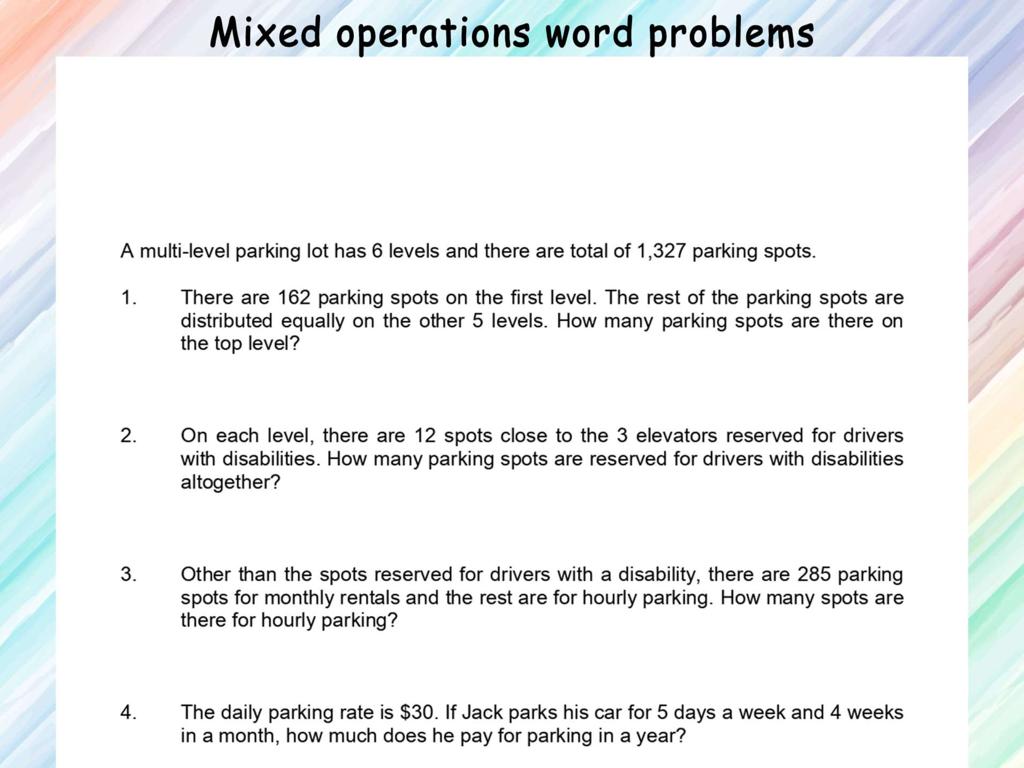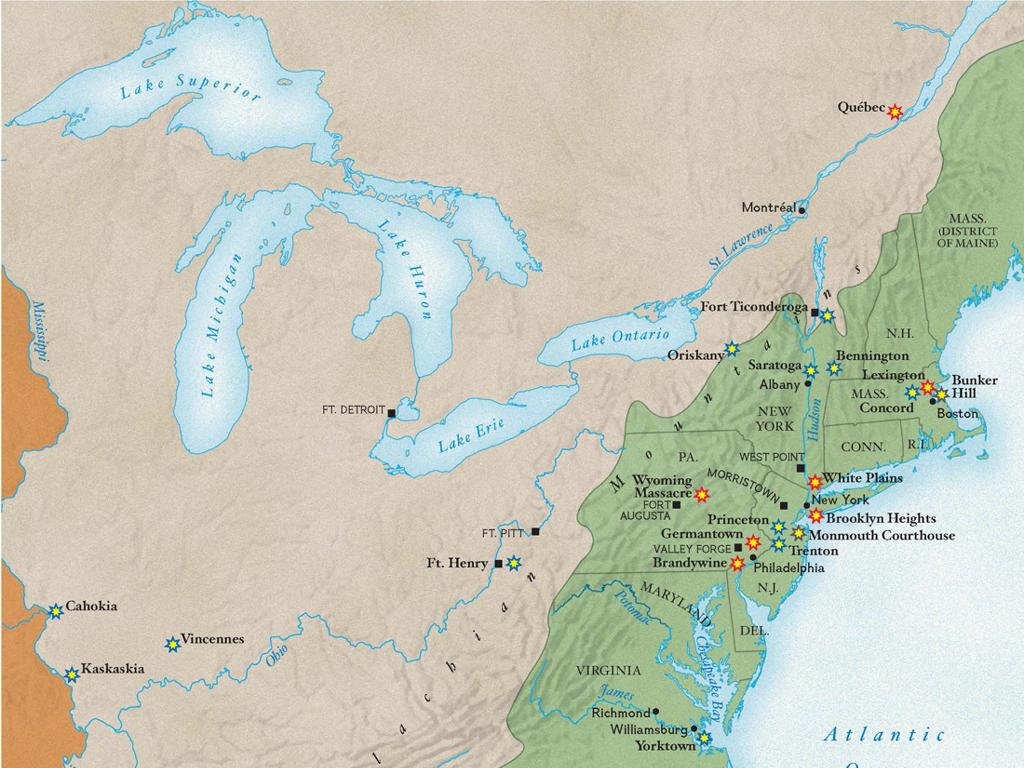Identify Plant Parts
Subject: Science
Grade: First grade
Topic: Plants
Please LOG IN to download the presentation. Access is available to registered users only.
View More Content
Welcome to the World of Plants!
– Discover plant parts
– Roots, stem, leaves, flowers, and fruits
– Learn how plants grow
– Plants start from seeds and grow up
– Explore plants’ needs
– Sunlight, water, air, and nutrients are essential
– Fun facts about plants
|
This slide introduces first graders to the basic structure and needs of plants. Begin by explaining the main parts of a plant: roots absorb water and nutrients, stems provide support, leaves make food through photosynthesis, flowers attract pollinators, and fruits contain seeds for new plants. Discuss the growth process from seed to mature plant, emphasizing the importance of sunlight, water, air, and nutrients from the soil. Engage the students with interesting facts, like how some plants eat insects or how the largest flower in the world can grow up to 3 feet across! Encourage the children to observe plants in their environment and to think about how each part of the plant has a special role.
What Are Plants?
– Plants are living organisms
– They grow in soil
– Plants have stems, leaves, roots
– Roots anchor the plant, stems support, leaves make food
– They make food and oxygen
– Photosynthesis creates food and oxygen for us
|
This slide introduces the concept of plants to first graders. Begin by explaining that plants are living things, just like animals and humans, but they have their own unique characteristics. They grow in the earth, which means they need soil to live. Discuss the main parts of a plant: roots, stems, and leaves, and explain the basic function of each part. Roots hold the plant in the ground, stems provide support, and leaves are where a plant makes its food. Highlight the process of photosynthesis, where plants use sunlight to make their own food and produce oxygen, which is essential for humans and animals to breathe. Use simple language and examples to make these concepts relatable, such as comparing plant roots to holding hands to stay put, or leaves to a kitchen where food is made.
Parts of a Plant
– Roots: Anchor and feed
– Roots keep the plant stable in soil and absorb water and nutrients.
– Stem: Support and transport
– The stem holds the plant upright and carries water and nutrients to different parts.
– Leaves: Make food with sunlight
– Leaves use sunlight to produce food for the plant through a process called photosynthesis.
– Flower: Create seeds for new plants
– Flowers are the reproductive part of some plants, leading to the creation of seeds.
|
This slide introduces the basic parts of a plant and their functions, tailored for first graders. Start by explaining that just like humans have different body parts, plants have parts that help them live and grow. Roots act like a plant’s feet, holding it in place and drinking water from the soil. The stem is like the plant’s body, supporting it and acting as a highway for water and food. Leaves are the plant’s kitchen, where they cook up food using sunlight. And flowers are like a plant’s family, making seeds that can grow into new plants. Use simple language and relatable analogies to help students understand these concepts. Encourage them to touch and observe real plants if possible.
Let’s Look at Roots!
– Roots act like straws
– They suck up water and nutrients for the plant.
– They drink water from soil
– Roots are mostly underground
– You can’t see them because they are under the dirt.
– Roots support the plant
– They keep the plant steady and upright.
|
This slide introduces the concept of roots to first graders by comparing them to straws that plants use to drink water from the soil. Emphasize that roots are a crucial part of the plant, mostly hidden underground, and they play a vital role in the plant’s survival by absorbing water and nutrients. They also help to anchor the plant in the soil, providing stability. Encourage students to think about how they drink with straws and relate this to how roots function. You can also discuss how roots can vary in size and shape but all serve the same fundamental purposes for the plant.
The Stem is the Plant’s Elevator!
– Stems transport water and nutrients
– Like an elevator, stems move things to different parts of the plant
– They support leaves to face the sun
– Stems act like a strong backbone, keeping leaves up high
– Stems can be thick or thin
– Trees have thick stems (trunks), while grasses have thin ones
– Some stems are edible for us
– Celery and asparagus are stems we can eat
|
This slide introduces the function of the stem in plants. Explain that the stem is like an elevator because it moves water and food from the roots to the leaves and other parts of the plant. It’s also like a strong backbone that holds the leaves up towards the sun, which is important for making food through photosynthesis. Discuss the variety of stems, from the thick trunks of trees to the thin stems of grasses. Highlight that some stems, like celery and asparagus, are parts of the plant that we can eat. Encourage the students to touch and feel different types of stems and to think about how they act as the plant’s support system and transportation network.
Leaves Are the Plant’s Kitchen!
– Leaves make food using sunlight
– Like a kitchen uses ingredients to make food, leaves use sunlight to make food for the plant.
– This process is called photosynthesis
– Photosynthesis is how a leaf makes food, using sunlight, water, and air.
– Leaves have various shapes and sizes
– Some leaves are big, some are small, and they come in lots of shapes!
– Importance of leaves to plants
– Leaves are important because they make the food that helps the plant grow and stay healthy.
|
This slide introduces the concept of photosynthesis and the diversity of leaves to first graders. Start by explaining that leaves are like a kitchen for the plant where food is made using sunlight. This process is called photosynthesis, which is essential for the plant’s survival. Highlight that leaves can look very different from one another, just like how different kitchens can look, but they all have the same job. Emphasize the importance of leaves in providing nourishment to the plant. Use simple language and relatable comparisons to help students understand these concepts. You can bring in real leaves or show pictures to illustrate the variety of shapes and sizes.
Flowers Are Not Just Pretty!
– Flowers can create seeds
– Flowers aren’t just for show; they make seeds for new plants.
– Bees help flowers
– Bees and insects visit flowers, helping them to make seeds.
– Pollination is key
– Pollination is when bees move pollen from one flower to another.
|
This slide introduces the concept that flowers have a purpose beyond beauty, emphasizing their role in seed production and the process of pollination. Explain that seeds are essential for growing new plants. Discuss how bees and other insects are attracted to flowers for food and, in the process, help with pollination by transferring pollen. This is a fundamental concept in plant reproduction and an excellent opportunity to introduce the importance of bees in our ecosystem. Encourage students to think about how flowers in their own gardens or local parks are part of this process.
Class Activity: Plant Detective
– Work in groups with different plants
– Find and draw plant parts
– Look closely to identify each part
– Roots, stem, leaves, flower
– Draw each part you find on your plant
– Share your plant discoveries
– Tell the class about your plant parts
|
This activity is designed to help students learn about plant parts through hands-on experience. Divide the class into small groups and provide each group with a different plant. Guide them to observe their plant closely and identify the roots, stem, leaves, and flower. Provide drawing materials so they can sketch each part. Encourage them to discuss within their group what each part does for the plant. After the activity, each group will share their findings with the class, fostering a collaborative learning environment. Possible variations of the activity could include using magnifying glasses to see details, comparing edible and non-edible plants, or even planting seeds and observing their growth over time.






